|
“It’s a strange feeling having guilt around sharing a positive birth story as I know birth is so unpredictable and doesn’t always go to plan. People are quick to tell you their negative birth experiences when you are pregnant and it is usually followed by some iteration of “oh you just wait, you will see what I’m talking about”. We need more positive stories around birth out there so that is why I am sharing my positives unmedicated home birth story. I have always wanted kids and when I found out I was pregnant I was so grateful and excited. I did A LOT of research and preparation for birth. I knew, in the ideal situation, I would give birth at home, in water, and with no medical interventions. In preparation for birth, I read a lot of books, some of my favorites being “Babies are not Pizzas. They are Born not Delivered”, “Sweet Sleep” and “Ina May’s Guide to Childbirth”. We also took classes with Sonya our doula and also a hypnobabies prenatal class with Ricky Issler, which I think significantly contributed to how I was able to cope during birth. My water broke at 9pm on June 9, which also happens to be my birthday. My husband and I were out with friends but I quickly excused ourselves cause I thought something was up. On the car ride home I knew for sure my water had broke, as I was now sitting in a large puddle in my freshly detailed car lol. When we got home I texted my midwife and doula to let them know my water broke but no contractions had started and both of them said to take some gravol and get some rest! By 10pm I had taken my gravol and was laying down to rest listening to my hypnobabies sound track, while my husband was frantically getting the rug moved in the living room, blowing up the pool, and getting some things crossed off the todo list (baby was 7 days early). Laying down to rest didn’t last long as I quickly became very uncomfortable in any laying position. It started out with cramping and I quickly knew I was having real contractions. I kept trying to lay back down cause I thought I was in for the long haul and knew I needed rest, but now the only place I could get comfortable was on the toilet. Around 12:30am we checked in with our doula and I was still talking through contractions, I was nauseous so I was throwing up every once and a while but my contractions were only about 20 - 30 secs long and we agreed to check back soon. I continued to labour on the toilet for a while as any other position didn’t feel good. Around 2am my husband brought up the birthing ball to give that a try and that was a great relief. I was now concentrating very hard, still listening to my hypnobabies relaxation music and making a deep humming sound which helped me focus. As we neared 3am things were intensifying and I was getting the chills which I knew could mean I was going into the transition stage of labor. We decided we should time the contractions, they were 45 secs long and coming quickly. The doula and midwife were called and both were on route. My husband moved me downstairs to continue to labour on the birthing ball. I also had the tens machine on now which was a nice distraction. Once the doula and midwife arrived and were set up, we started to fill the pool. At around 4:30am my midwife asked if I wanted to be checked to see how far along we were and I agreed. Much to all of our amazement, I was already 9cm and started to have the pushy feelings. The pool couldn’t fill up fast enough at this point lol! By 5am I was in the pool and activity pushing. The water was such a nice relief. After about 1.5 hours of pushing in the pool we were making progress but not as much as we would have liked to see. We moved to land ie. the couch around 6:50am and within 20 mins we had a beautiful baby boy in our arms! My birth was very fast for a first time birth. Baby was with us just 10 hours after my water broke. I am so grateful I had such a positive birth experience and that I was able to stick to my plan, but I was also willing to change the plan if it needed to be changed. Healthy baby and healthy mom is the most important thing at the end of the day. The best part: having such a supportive birthing team and husband. Their words of encouragement really help get you through. And of course, having a healthy baby come into the world. The worst part: the ring of fire lol (when the babies head is crowning and about to be born). This is the only moment I would describe as painful, it only lasted a few moments as I waited for the next contraction to come and birthed the babies head. Oh and when they push on your stomach after birth, that was not cool lol. Most helpful coping strategies:
I hope this story encourages anyone considering an unmedicated birth whether at home or in the hospital! -Rebecca”
1 Comment
My husband and I are six weeks in to our lifetime journey of having a child. While preparing for our daughter’s arrival, we purchased a number of sleep options. We had heard from many of our parent friends and family members that their child would refuse to sleep in their crib, or bassinet, and knowing how important sleep is, we decided to be prepared, and have a number of accessible options. One of the items we decided to try was the DockATot Deluxe.
The idea of bed-sharing made us equally anxious. I am a person who cannot sleep without a blanket and multitude of pillows, and after a few nights of sleeping with my daughter on my chest. We decided to, on the recommendation of a friend, transition her to sleeping in our bed, inside of the DockATot. That being said, we were fully educated and aware of the sleep safe recommendations, and understood that technically the DockATot does not meet safe sleep recommendations as recommended by the AAP (American Academy of Pediatrics). We encourage anyone who considers letting their child sleep unsupervised in the DockATot to do their research and to make their own independent decision into the best sleep situation for their family. The Co-sleeping ControversyPrior to the birth of my daughter, I was avidly against co-sleeping and bed-sharing for safety reasons. However, reality hit hard after her arrival and I discovered that my new baby would not sleep anywhere other than in my arms or bed. I was frequently breastfeeding to establish milk supply, and my sleepy newborn required mother assisted wakeups. She would scream and cry anytime she was left in her bassinet, and soon I found myself too tired to handle her care. Having her in my bed helped all of us have a better sleep, and frank discussion within my 200-member strong pregnancy turned parenting group revealed that almost everyone else was co-sleeping as well. Portability The DockATot is lightweight and is easy to bring with you from place to place. I often use the DockATot for supervised naps when I need to be places other than my bedroom. If I am upstairs working at my computer, my daughter and the DockATot come with me. This allows for my daughter to be nearby at all times, even during naps and makes it easy to soothe her during wake-ups.. I find the portability of the DockATot extremely convenient, and plan to bring it with me even for long trips and camping. (Check back in September for my blog post on camping with your baby, in which I will be featuring the DockATot again!) Resting My daughter slept better in the DockATot than anywhere else. She cannot roll over in it, and the DockATot along with a swaddle, help reduce her moro reflex and reduce nighttime wake-ups. Our first night in the DockATot, my daughter slept six hours straight. This continued until her six week growth spurt and sleep regression, in which she is still getting three hour chunks of sleep. I sleep more soundly knowing that my daughter is beside me, but not directly in my bed. What I Don’t Love about it Washing The DockATot comes with a removable cover that can be easily washed and dried when exposed to the inevitable newborn messes of breastmilk, spit up and other bodily excretions. However, the DockATot cover is extremely difficult to replace once washed. I found putting the cover back on my DockATot a two man and two hour job. Something that is even more difficult to do, when you are also trying to take care of a baby. Changing The DockATot makers recommend the DockATot for use as a changing station. However, at the cost and with how difficult putting a newly washed DockATot cover is. I would never use it to change my baby in. Anyone who has changed a newborn (or any baby for that matter) knows that they love to pee and poo the minute their diaper has been removed, and regardless of whether you have replaced that diaper with a new one. As well, many of the DockATot cover patterns are white, or have white designs in them. Have you ever washed newborn poop out of white fabric? I have, and let me tell you, it’s not pretty. Side note: Co-sleeping is not recommended by the Health Canada or by Alberta Health. Both organizations recommend a flat, firm surface, with no pillows or blankets, and not within an adult bed. **Disclaimer: Be please aware that we are not promoting any specific sleep situation. I am only detailing my own personal experiences and the things that worked best for our family. For educational purposes on why some people choose co sleeping and bed sharing, our doula team recommends: Nighttime Parenting by Dr. Sears The Family Bed by Tine Thevenin Sweet Sleep by Theresa Pitman Sleeping with Your Baby: A Parent’s Guide to Cosleeping by Dr. James McKenna Three in a bed by Deborah Jackson Further educational resources Safe Sleep Resources from Platypus Media Where Babies Sleep from the ISIS Infant Sleep Information Source Guidelines to Sleeping Safe with Infants by James J. McKenna, Ph.D. Safe Sleep 7: Is it safe to bedshare? is a free handout for parents, produced by La Leche League International Infant Health Research: Bed Sharing, Infant Sleep and SIDS from the UNICEF UK Baby Friendly Initiative Attachment Parenting International – Infant Sleep Safety Babies sharing their mothers’ beds while in hospital: a sample policy from the UNICEF UK Baby Friendly Initiative Guideline on Co-Sleeping and Breastfeeding, Clinical Protocol Number 6 from the Academy for Breastfeeding Medicine AAP Policy Statement: SIDS and Other Sleep-Related Infant Deaths: Expansion of Recommendations for a Safe Infant Sleeping Environment (Oct. 17, 2011) Disclaimer: It is very important to discuss any herbs or medicinal remedies that you plan to use with your primary care provider. Some people with sensitivities to flowers may experience allergic reactions to things such as Chamomile or Chickweed. For more information regarding herbal use in pregnancy and postpartum, check out these resources: Susan Weed Demeter Clark Aviva Romm DIY Postpartum/Baby Products |
| For a good laugh check this video out: Amy Schumer, Turtle Births and Sherpa Doulas. Side note: her portrayal of midwives/doulas is obviously not accurate, we are highly trained and educated, just saying. |
I know I’m guilty of this – I rarely take time to address, honor or mark the milestones in my life. Sometimes, this takes a toll on me! It can feel like all of these important events are flying by and my journey seems to be going far too quickly. Sacred Pregnancy is about slowing down, appreciating the little (and big!) changes your body is going through and honoring this transitional time in your life.
A Sacred Pregnancy retreat will teach you to take time for yourself – even if it’s 5 minutes a day. It outlines the importance of meditation and journaling to connect to yourself and your baby and create a sacred space for reflection. It will also encourage you to take a serious look at the expectations you hold surrounding pregnancy, birth and motherhood. Women will get all kinds of pregnancy and birth messages from the time they are a young girl until the step onto the pregnancy, birth and motherhood path. Are the expectations you have realistic? Are they serving you in a positive way? Some of these messages are healthy, good and empowering, but most from society at large are not. It’s important for us to look at our expectations and where they come from, or at least where do we think they came from. It’s also especially important to know that every birth story is a normal birth story. It’s your journey; it’s your life lesson.
Sacred Pregnancy is connection, is facing and forgiving your fears, is honoring the body that is growing an extension of love, is sisterhood. It’s growing your circle. It’s learning to change – because you are changing! Motherhood is a journey and pregnancy is just the beginning – so slow down when you can, you deserve to celebrate it!
| Samara Oscroft is the co-creator of our postpartum belly binds and is working on her Sacred Pregnancy certifications. |
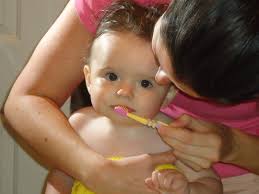
The reason I call it “oral health” is because it’s not just about the teeth. It’s also about the soft tissues which include the gums, tongue, lips, cheeks, floor of the mouth, and the hard & soft palates. All of these components should all be checked at your baby’s first appointment to make sure that everything looks healthy and within normal limits.
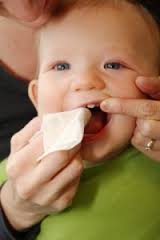
Most dental offices will give you an age appropriate brush for your infant and some tips on keeping their mouth healthy. Here are a few tips I share with parents:
-Use a damp cloth to wipe baby’s gums daily. Laying baby in your lap and lifting their lips out of the way is most thorough.
-All babies have a natural tendency to suck on things. Be aware that prolonged use of thumb/finger sucking and/or soother use can lead to changes in shape of the mouth and how the teeth occlude, or close together. Eliminating any sucking habits between age 2-5 is desirable.
- Introducing a sippy cup or cup by age 1 and allow the child to drink water or milk at mealtimes only. Juice is high in sugar and can easily cause decay.
- Never send baby to bed with a bottle. Decay can occur if milk sits in the baby’s mouth.
-Once baby has teeth, brush them gently with water only. Once they’re older you may want to consider toothpaste but NO FLUORIDATED TOOTHPASTE until your child can spit it out (around age 4 or 5)!
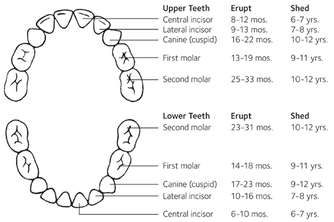
Babies tend to chew on things and salivate more heavily around the time when they get a new tooth. The function of the saliva is to soften the gums for the tooth to erupt. Chewing on toys or their fingers is also common and makes their gums feel better. It is NOT normal for babies to have a fever when their teeth are coming in. Please consult your baby’s doctor if he/she has a fever.
Occasionally a baby may have “thrush”. This typically appears as a white coating in their mouth that cannot be wiped off (2, 3). It likely won’t affect the baby much but on occasion it can cause him/her discomfort. Thrush is an overgrowth of a fungus, Candida albicans, which is part of the body’s normal flora. In particular instances, an overgrowth can occur if the balance between the healthy bacteria is upset, allowing the fungus to take over. Consult your child’s doctor if this occurs. Probiotics and an anti-fungal solution may be recommended.
I hope you have found this information helpful. Please feel free to email me anytime if you have more questions at [email protected]. More information about toddlers and oral health coming soon!
References:
- Clinical Practice of the Dental Hygienist, 10th Edition by Ester M. Wilkins (2009).
- Managing Patients With Oral Candidiasis, Samson Ng, JCDA (2013).
- Kidshealth.org, Yamini Durani, (2015).
- Canadian Dental Association, www.cda-adc.ca/en/, (2016).

Nicole Sailes is a certified Hypnobabies Instructor with Full Circle Birth Collective. Learn more about Nicole here.
Sonya Duffee CLD, CLDT, CCCE, CPD
Touch is an integral part of being human. Every inch of our skin is connected to nerves that relay the sense of touch to our brain for interpretation. Human touch produces a soothing and calming affect. It allows us to feel loved and cared for. Is it possible that there is more to it than we know? Is it usually instinctual to reach out to our children and hold them and nurture them from the start of their life?
Researchers have been discovering the benefits of immediate skin to skin contact for infants at birth, and the impact it has on their emotional engagement and development. Mothers who immediately engage skin to skin touch with their infants at the time of birth have increased maternal behaviour, and develop more confidence in themselves. Caring for their newborn is enhanced and they tend to breastfeed for longer periods of time.
Over the years, medical researchers have discovered the basic biological facts regarding the benefits and necessity of human contact and connection. Being touched brings a sense of safety and comfort in our environment, and it is through touch that healthy brain development occurs. [1]
There were three areas that became dominant in the research between parent and child, which concluded the need for connection at the start of life. The three areas were as follows:
Brain Development - Studies suggests that touch helps in brain development and produces a calming effect, reducing the stress hormone cortisol, which can be damaging to human brain tissue, effecting learning and memory. Loving affection and touch have been confirmed to develop healthy emotions and neurobiological development. [2]
Bonding – Connecting with our infant, holding and caressing them with gentle touch, brings a deeper connection to parents. The hormone dopamine, is heightened, producing a feel-good high which also helps your baby to emotionally attach to you. This positive interaction boosts self-confidence and security, and as the child grows, helps nurture his or her ability to relate to others.
Growth and Survival – The first contact an infant has with its mother brings a surge of hormones that can help regulate body temperature and blood sugar levels, as well as lower stress hormones that can inhibit sleep patterns and growth. A lack of touch can lower levels of growth hormone in a child, resulting in an immune system that may be weakened and create other health problems.
Science has identified positive effects of touch for babies and families to also include pain relief, physiological stability in heart rate and temperature of the newborn, infant weight gain and growth, and deeper parent-infant interactions. [3]
Infants in the NICU or who are born prematurely, greatly benefit from ‘kangaroo care’, (skin to skin with mothers) and receiving gentle touch. Dr. Neil Bergman, a senior medical superintendent states, "Physiology and research provide overwhelming evidence that kangaroo mother care is not only safe, but superior to the use of technology such as incubators. Depriving babies of skin-to-skin contact makes alternative stress pathways in the brain, which can lead to ADD, colic, and sleep disorders, among other things."
It is important for parents to consider their infant’s response to touch. Be conscious of signs of overstimulation, and of the delicate balance of our children’s needs. Signs of overstimulation in infants include crying, fussiness, hyperactivity and being withdrawn. In older infants, this may include clinging or hitting. Babies will often show a spaced out stare, turn away from their parents, or just not engage. The baby’s movements may become noticeably jerky, especially when on the verge of crying.
Touch can be through various means, such as cuddling, massage, gentle caressing of the hair, cheeks and face. Follow your infant’s cues to find out if your child becomes overstimulated and sensitive to touch. Use gentle light touches and gradual adjustments to physical affection. As children develop a sense of self, personal space and boundaries, their desire for affection may change. The positive effects and benefits are numerous! Follow your instinct and bring your child close to you for those warm cuddles, because before you know it, they will be off and running.
References:
- Study titled, "Bodily Pleasure Matters: Velocity of Touch Modulates Body Ownership During the Rubber Hand Illusion” were published online in Frontiers of Psychology. The research was led by Neuropsychoanalysis Centre Director Dr. Aikaterini (Katerina) Fotopoulou from University College London, and Dr. Paul Mark Jenkinson of the Department of Psychology, University of Hertfordshire in the UK.
- https://www.psychologytoday.com/blog/the-athletes-way/201310/loving-touch-is-key-healthy-brain-development
- https://www.nobabyunhugged.huggies.com/Assets/Files/The_Power_of_Human_Touch_for_Babies.pdf
| Sonya Duffee is a certified labour and postpartum doula, doula trainer, childbirth educator and placenta encapsulator with Full Circle Birth Collective. She is a founding member of Full Circle Birth Collective and has been serving families since 1998. Click here to read more about Sonya |
Categories
All
Birth
Birth Prep
Birth Stories
Breastfeeding
Cloth Diapers
DIY
Doula Approved
Herbs
Humour
Hypnobabies
Learning
Loss
New Baby
Newborn
Pandemic
Parenting
Placenta
Postpartum
Rainbow Baby
Recipes
Reflections
Sacred Pregnancy
Siblings
Sleep
Solstice
Trust In Your Body
Archives
May 2024
August 2023
July 2023
January 2023
September 2022
August 2022
July 2022
June 2022
April 2022
March 2022
January 2022
October 2021
June 2021
May 2021
December 2019
May 2019
April 2019
May 2018
April 2018
January 2018
October 2017
August 2017
May 2017
April 2017
February 2017
January 2017
December 2016
November 2016
October 2016
September 2016
August 2016
July 2016
June 2016
May 2016
April 2016
March 2016
February 2016
January 2016
November 2014


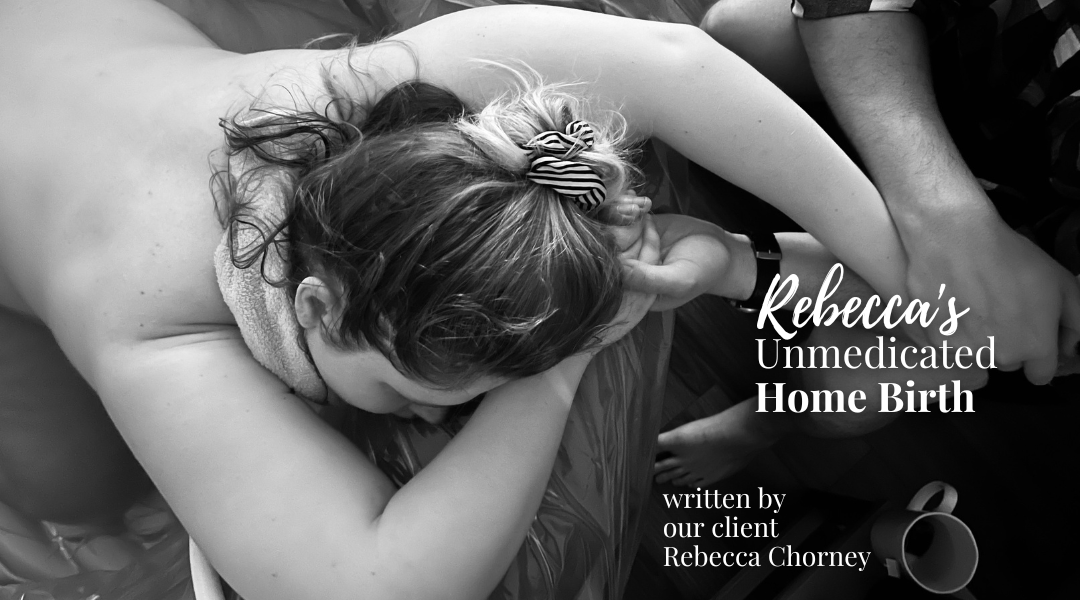
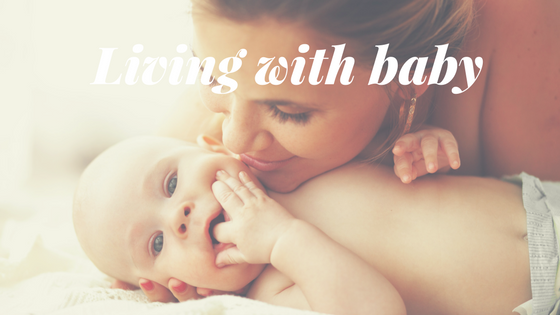



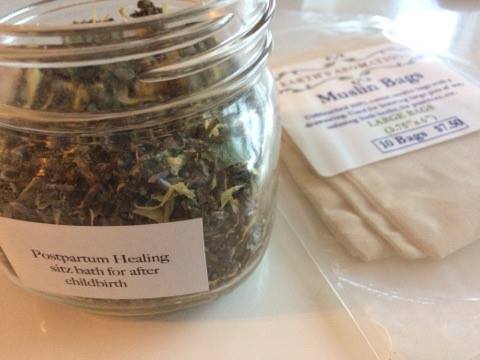
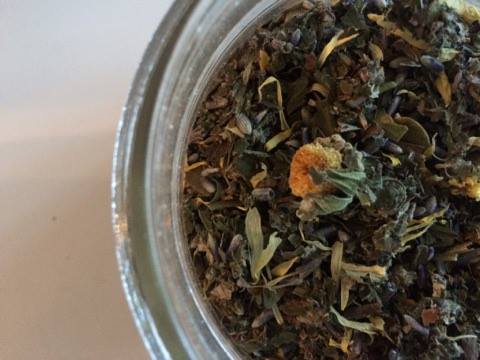
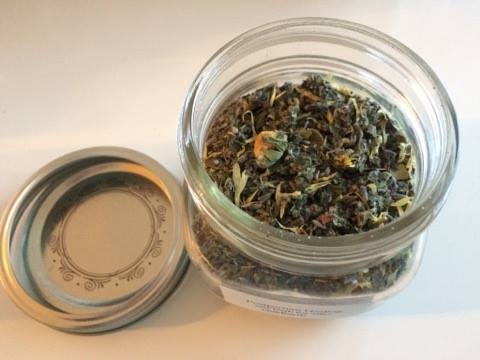
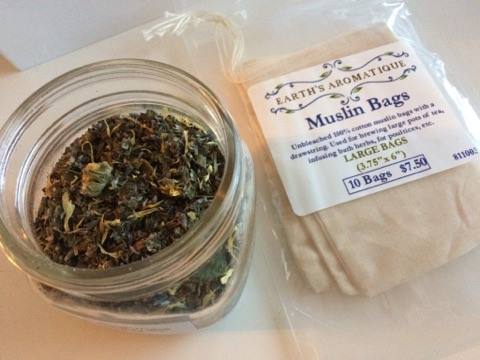
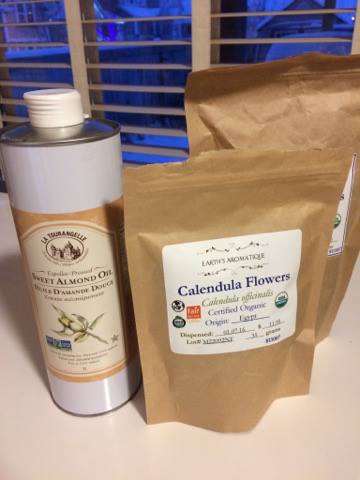

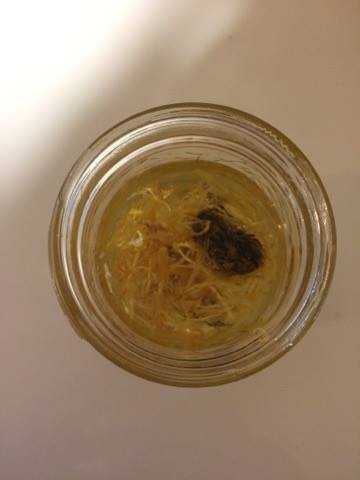
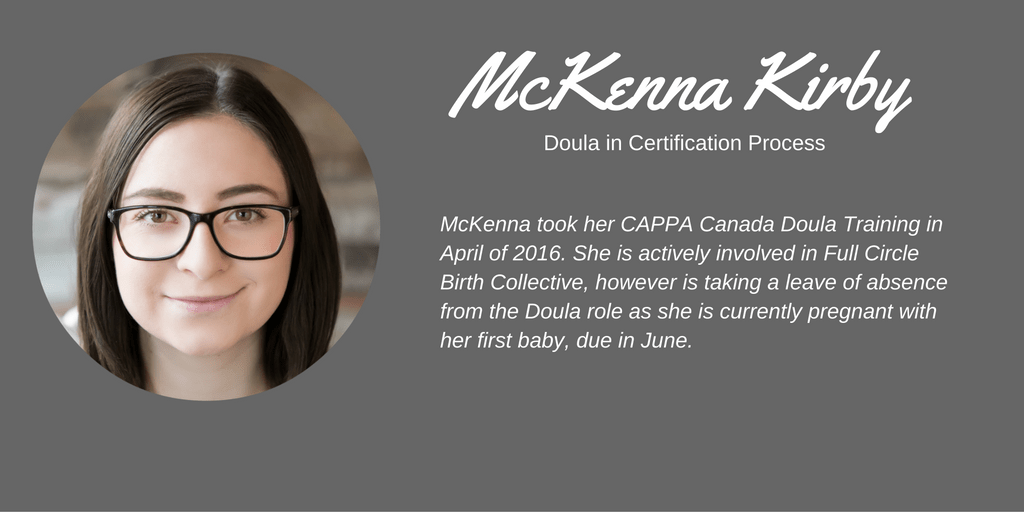
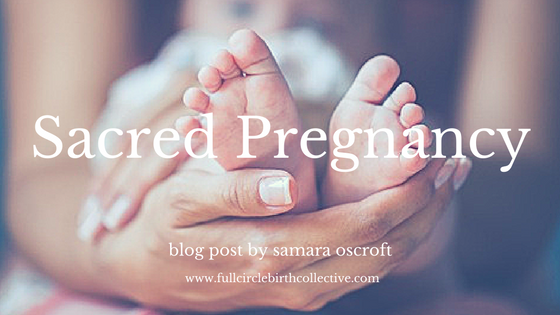
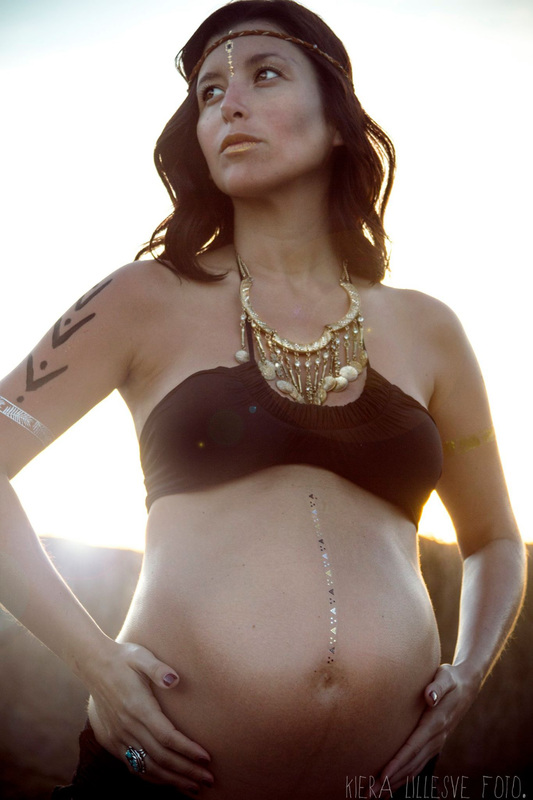
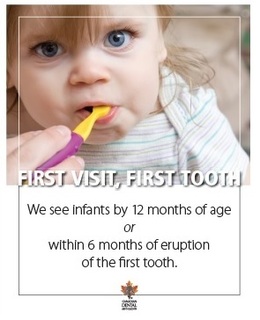
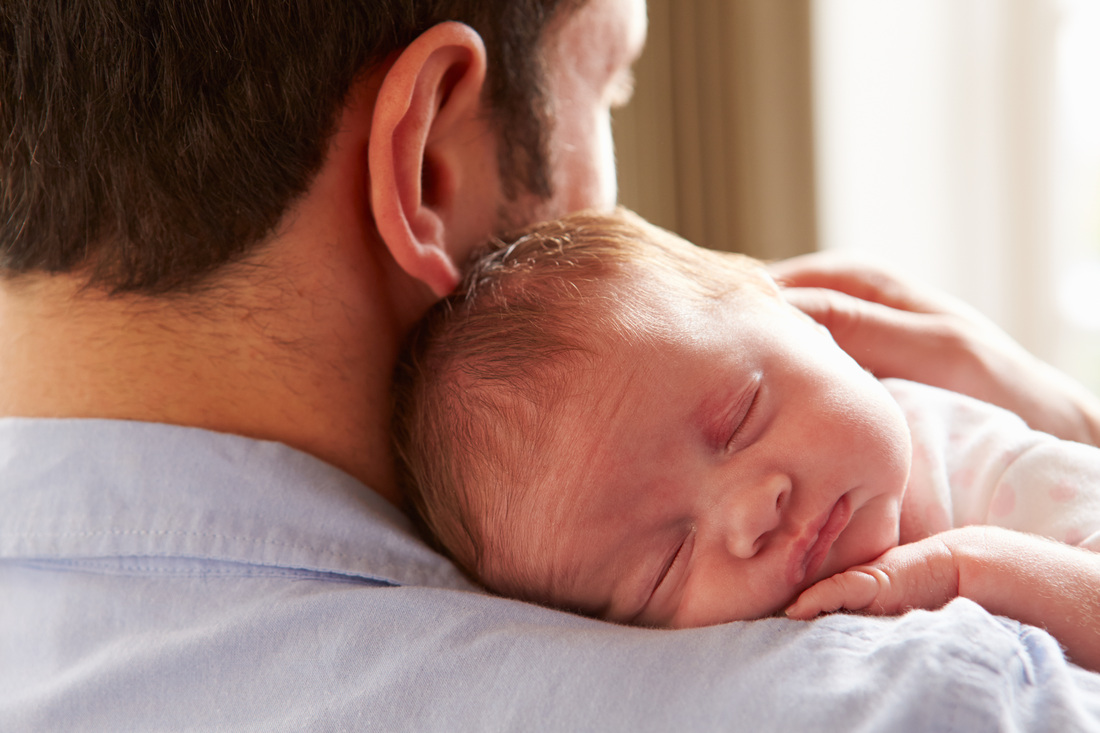
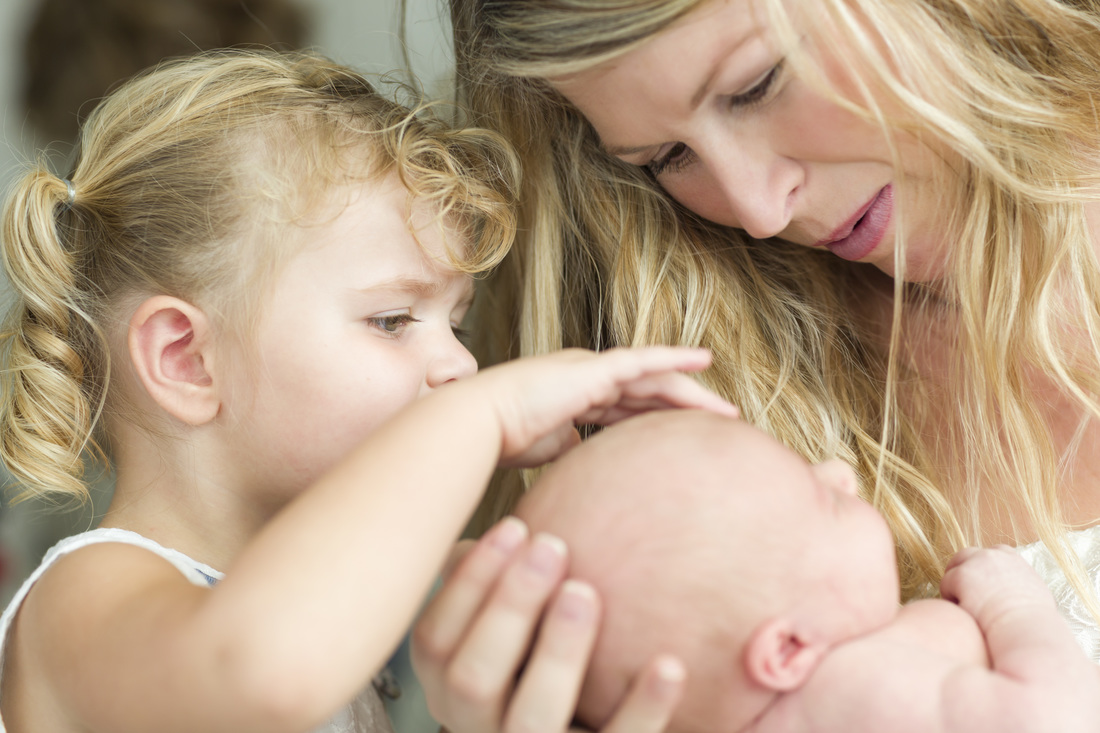

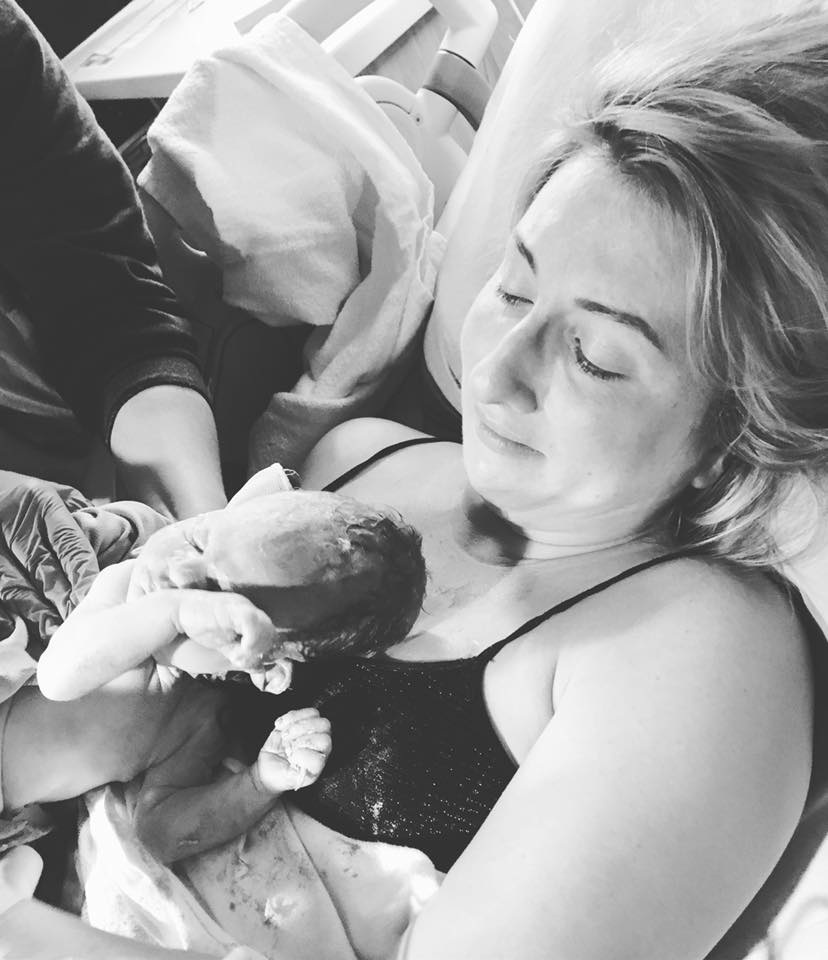
 RSS Feed
RSS Feed